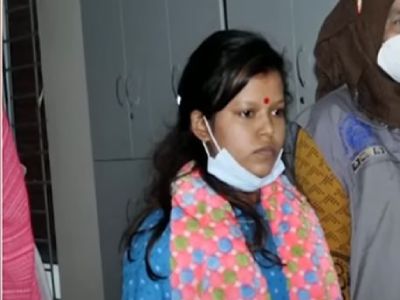Nij Vaishakh Shuddha Trutiya, Kaliyug Varsha 5112
By Mark Magnier, Los Angeles Times
Reporting from Murshidabad, India — For a cow, it doesn’t get much better than India.
Wander the streets surrounded by vegetarians, enjoy being adorned with garlands and treated with god-like reverence as you look forward to dying of old age.
But danger lurks, even in paradise.
A dirty little secret that most Indian politicians don’t discuss is the thriving cow smuggling trade from their Hindu-majority nation, home of the sacred cow, to Muslim-majority Bangladesh, where many people enjoy a good steak. The trade is particularly robust around the Muslim festival of Eid.
India has outlawed cattle exports, but that hasn’t prevented well-organized traffickers from herding millions of the unlucky beasts each year onto trains and trucks, injecting them with drugs on arrival so they walk faster, then forcing them to ford rivers and lumber into slaughterhouses immediately across the border.
On the hot, flat Murshidabad plains bridging the border, Sarvender Ghankar, 24, a member of India’s Border Security Force, pointed toward Bangladesh. It’s a few hundred yards away, but the line is unmarked. Farmers wander back and forth. But to hear him talk, the divide is as secure as Ft. Knox.
"There used to be smuggling, but now the border is completely sealed," Ghankar said, sporting camouflage fatigues, shiny black boots and a 20-round semiautomatic rifle. "Soon we’ll even have a fence."
Area residents have a different take.
"The border guards are in on it, both in India and Bangladesh, and take bribes to look the other way," said Yasin Mullah, 55, a Murshidabad shopkeeper and cow owner. "Smuggling is rampant these days with all the money and growing population."
Estimates suggest 1.5 million cows, valued at up to $500 million, are smuggled annually, providing more than half the beef consumed in Bangladesh.
The cows come from as far as Rajasthan, about 1,000 miles away. Many trade hands several times en route.
At the Panso market in Jharkhand state, an interim stop about 300 miles from the border, the 15,000 or so cows passing through each week fetch about $100 apiece, local vendors say.
Animals that arrive exhausted are injected with Diclofenac sodium, a banned anti-inflammatory drug, to energize them. Most of the traders are Muslims. Many of the drivers and handlers are Hindus. At the border, crossings are usually done at night.
Most cows pass through West Bengal state, which shares a 1,300-mile border with Bangladesh. The state’s communist government maintains a neutral line on religion, allowing cows to be openly slaughtered and traded.
Other Indian states accuse West Bengal of encouraging the illegal trade, said Haripada Biswas, a state assemblyman from Jagadal district, a stance he sees as hypocritical.
Source: LA Times
Also See
 |
Hang terrorist Mohd AfzalMohammad Afzal is a Kashmiri terrorist who attacked parliament in 2000. Supreme court has given death sentence but congress is protecting this anti-Indian. |
 |
Hindu Genocide in Kashmir & Bangladesh
Online photo exhibition of Hindu genocide and temples destruction in Kashmir by local Muslims. Series of exhibitions being arranged. |

 Pakistani Hindus express their happiness, thank PM Modi after receiving Indian citizenship under CAA
Pakistani Hindus express their happiness, thank PM Modi after receiving Indian citizenship under CAA MHA issues first set of citizenship certificates under CAA to 14 applicants
MHA issues first set of citizenship certificates under CAA to 14 applicants Bangladesh: Hindu girl sentenced to 5 years in jail over accusation of ‘blasphemy’
Bangladesh: Hindu girl sentenced to 5 years in jail over accusation of ‘blasphemy’ Dehradun: Ahtasam and Sahil rape 2 Hindu minor sisters after entrapping them in love affair
Dehradun: Ahtasam and Sahil rape 2 Hindu minor sisters after entrapping them in love affair PFI formed death squads to kill Hindus after they murdered RSS leader Rudresh: NIA investigation
PFI formed death squads to kill Hindus after they murdered RSS leader Rudresh: NIA investigation Conspiracy to kill Hindu leaders: Shakil Sheikh arrested from Maharashtra by Surat Police
Conspiracy to kill Hindu leaders: Shakil Sheikh arrested from Maharashtra by Surat Police